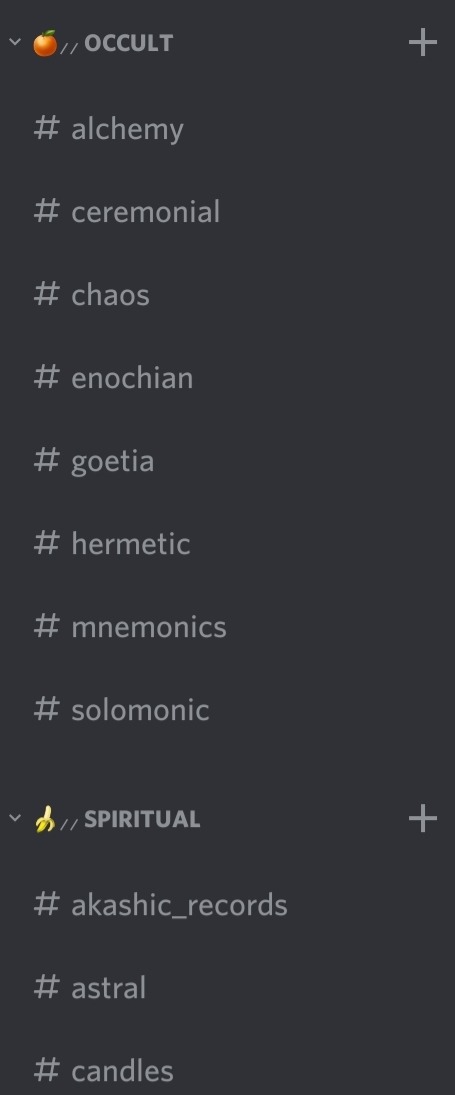How To Prepare For A New Semester/year:
How to prepare for a new semester/year:
So as you all know I’ve been back to uni for about two weeks now and I was NOT feeling it (to say the very least). So here is what I did to get out of that crappy omg I can’t believe school’s back mood:
Clean your room: Back to school shopping is a huge deal for me but personally I like to start by cleaning my room, that includes closet, desk .. etc. Not only does this give you kind of a fresh start but also you end up figuring out exactly what you have and don’t have so you buy way less stuff (and save more money)
And while you’re at it stop hoarding: I’ve had books just sitting there for nearly four years that I haven’t touched (hello histology), same goes for clothes. Get rid of the things you know you don’t use. If you haven’t used them in a year chances are you won’t magically change your mind and start using them. You can sell them or give them away.
Don’t throw away half used notebooks: This annoys me soooo much. Cut out the pages you’ve written in and RECYCLE them. Less is more people. You don’t have to use them for school, I use those for writing down workouts or tracking what I eat, making shopping lists, goals or whatever I feel like writing (so people won’t see you with the same notebook from last year, they probably won’t notice anyway but if that’s your excuse here you go) ALSO: For clothes that you like but are too long, too big or whatever get them tailored! Don’t throw those away too.
Now that we’ve decluttered, make a list of what you need: Tailor this to your schedule as much as possible. If you have long days at uni with a significant amount of walking maybe invest in comfy shoes, if you feel like a certain notebook would work really well for a certain class get it, if you know you’ll be carrying a lot of stuff around and don’t have a proper backpack get one. Write down everything you need before you go to the store.
Figure out what you’ll do regarding your meals: Do you have enough good quality tupperware? Do you have all the groceries? Watch a few videos on meal prepping and have a set list of quick and healthy meals that suit you and your schedule and your diet.
Optimize your study space: I’m not saying make it all white and aesthetically pleasing (unless that’s your thing), just make sure it’s a good environment for you to be productive. Figure out if you need to make any changes to it before school starts.
If you can rearrange the furniture in your room: You’d be surprised at how much this affects your mood, you don’t have to buy new stuff to feel renovated for back to school.
Take a look at all of your classes and try to work out a daily (& study) routine: SUPER IMPORTANT, before school starts try to plan out what your weeks will look like, what you’ll do for certain gaps (for example do you have enough time to go study off campus or get a workout in), which resources you’ll use for every class, how are you going to commute, what kind of notes you’ll take for every class ..etc. Distribute your workload evenly throughout the week (so days when you go home early, allocate more study time and vice versa)
Lurk at studyblrs and studygrams: or even start one, this community is super motivating (pretty sure you already know that)
One last pampering session: This is very very optional and not for everyone but I personally get a hair treatment done before uni so that I don’t spend as much time doing my hair in the morning. Same goes for body hair removal, face masks …etc. It just makes me feel like a new woman 💁🏼♀️
More Posts from Alittleanxiousbadger and Others







This tower, patched unevenly with black ivy, arose like a mutilated finger from among the fists of knuckled masonry and pointed blasphemously at heaven. At night the owls made of it an echoing throat; by day it stood voiceless and cast its long shadow.
Mervyn Peake

William Shakespeare — Macbeth
Any advice for parents wanting to home school? I'm scared people are going to advise me of being a brain washing cultist.
I’ve been SOOO excited to answer this ask because I have so many good things to say about homeschooling! Actually, if I’m honest, I have absolutely nothing bad I can possibly think of. I was homeschooled all the way through 12th grade and there is nothing I would change. I will ALWAYS be grateful to my parents for devoting themselves to me in that way, and especially my mom for sticking with it - from the rocky years of highschool, to back when I was an elementary brat. Looking back, we agree it was worth any struggles tenfold.
The first thing you need to know is this: you will be ridiculed. At some point, somewhere, someone is going to criticize you. Whether it be your teaching, your abilities, your discipline, or your morals, the world is going to try and push you down. Therefore, you need to be confident, you need to know your motivation as to why you are doing this, and know that, as the parent, only you know what is best for your child.
A good way to kindly explain that to someone is to know the benefits of homeschooling. And the list is long!
— Homeschooling gives you the freedom to specifically tailor the curriculum to your child’s needs. Whether going slower or faster, you can go at a pace that is comfortable to you and your child. For example, division was a nightmare for me as a child, but I was reading at a 12th grade level by early grade school. Therefore my algebra was slow moving and required a lot of repetition, but I blew through English.
— Homeschool students as a whole score significantly higher on standardized testing, with the low range being 15-30% improvement, and typically score above the average collage admission test. All of this is regardless of the education level of the parents and any degree of formal they may have. You don’t need to be a certified teacher or have lofty degrees to teach your children effectively.
— Building off both the other points, I would argue that homeschooling leaves you over prepared for college. I briefly mentioned math is not my strongest suit. I thought, in going to college, that I would be behind, but I actually placed significantly higher than I thought I would. Socially, homeschoolers are generally more prepared as well, for as where public schoolers function primarily with their same age group, homeschoolers tend to be more accustomed to a variety of ages - from toddlers to senior citizens - and that can allow one to adapt well into different class, work, and social settings.
— For those with illnesses, physical or mental limitations, homeschooling’ flexibility is a definite asset, as it allows you to modify your schedule as needed, even on a day-by-day basis, and you don’t have the stress and pressure of missing school days - you can do the work when it is convenient for you.
— Homeschooling encourages enjoyable learning and self-motivation. I going to the aquarium and watching the school kids have to breeze through it in two or three hours. But for us homeschoolers, we could spend all day there, and we did! Why? Because I found it fascinating! I would read every brochure on the tropical fish, ask questions of the staff as I pet sharks and sting rays. Homeschooling doesn’t limit learning, it encourages exploration and deep thinking. You don’t have to rush through.
— Homeschooling encourages family bonding. Most the time, we all did school in the same room, either at the kitchen counter or consuming the kitchen table in books and papers. We would take a break from math and mom would read to us everything from history to science to fiction. Reading was a huge part of my homeschool life, and even now that I’ve long since graduated, my family still likes to read aloud together.
— It saves time. Where my public school friends were in school for eight hours a day and then spent several hours on homework, I got my school done in an average of four hours max. I would be done by noon, and the out climbing trees with my brother for the rest of the day. Learn about the world and then go live in it! I would have missed out on so much if I hadn’t been homeschooled.
— This next point is very important when you’re talking about “brain washing”. Public schools are growing increasingly more aggressive toward adverse opinions, any mention of God, and in many cases are implementing revisionist history. Not even biology is taught correctly anymore with this distorted view of sexuality. Homeschooling allows multiple view points to be explored and allows for deep research into why such a point is incorrect, what actually happened historically, ect. Public schools expect things to be taken at face value too much of the time. Homeschooling promotes critical thinking and exploration. You don’t just slam the door on counter views, you talk about them and discuss it. Additionally, homeschooling is not just for the religious. There are many people, including atheists, that homeschool simply because they recognize the benefits to their lifestyle and, most importantly, their child.
— Homeschooling protects your child. We have all heard people talk about how “sheltered” homeschoolers are. The only thing I was ever sheltered from was bullying, profanity, sexual jokes and harassment, violence, and peer pressure. I had many social circles and events (the joke among homeschoolers is often that they’re never home), but it was always in a positive environment. I would have been so much more insecure if I had had to face the things all my public school friends did, but instead I grew up knowing I could be confident in who I was. On the same note, it is important to make sure your child has a healthy amount of social interaction. Awana, youth group, various clubs, sports, are just a few ways you can make sure your child is active.
— Homeschooling saves money. Both within your home, and in regard to tax dollars spent toward public schools. There are great monetary and economical benefits to homeschooling.
— Public schools are a fairly modern development. For thousands of years the bulk of one’s early learning was done at home or in a relatively small school where you still received that one-on-one instruction - very similar to homeschooling. The norm was not 30-40 kids with one teacher. It wasn’t the massed produced learning you see today.
Now a few more things before we go…
There is a HUGE array of curriculum out there, you can pick and choose from a virtually endless myriad of resources. Find what works for your child. Know that often what works for child #1 does not work for child #2. I went through three math books until I found what really worked for me. Don’t be afraid to try different things. (And also look for homeschool book sales to buy at! You can save lots by buying used)
FIND A SUPPORT GROUP. This is HUGE for you as a parent because when challenges arise, and I PROMISE you they will, you are going to want someplace to look for solid advice. A network of good friends, co-ops, homeschool church groups, homeschool academies - whatever it is, find a group of homeschoolers near you where you can ask questions, present your challenges, and get positive feedback. More so than that though, you need encouragement. The best people to give that to you are people who have been in the same spot.
Know your legal rights as a homeschooler. I would highly advice checking out the Homeschool Legal Defense Association (HSLDA). They have fantastic resources on a general basis, but it is really important to know your rights as a homeschooling parent. At the very minimum, check out the state requirements and know what you’re obligated to do. When I was homeschooled, I didn’t need to take hardly any standardized tests, but there were a lot of people saying I needed to. So even small things like that are really important to know (it saved me a lot of anxiety).
Homeschooling isn’t always easy, but I promise you that the rewards far outweigh the cost. It is worth every moment. There are few ways better than this to show your child just how very much you love them.
Last thing! I came across this nifty page with all sorts of facts and statistics on homeschooling that is an easy and enlightening read [x] and a quick shout out to my many friends that brainstormed with me on this (readers, I hope you know you’re getting the best advice out there thanks to them! ^^ )









30th anniversary of the fall of the Berlin Wall - November 9, 1989.
400 witchy resources 🌿💛
you like magic and witchcraft? you like the occult? maybe spirituality? hell yeah; well get ready for a discord server filled with almost 400 high quality books, texts, blogposts, apps, and podcasts of endless witchcraft and occultism
the server and its content is constantly expanding - with new channels being added for new topics and texts as more gets added on our weekly schedule; feel free to join us here 👉📓



Tasseography
•Tea leaf reading•
You might be wondering where this unusual form of divination came from, so here’s a short history on tasseography. Shortly after tea was introduced to Europe, tea leaf reading, as it’s now recognized, was born. Similar divination tools had been used with an assortment of other materials. The art of tea leaf reading spread through Europe, and is now practiced throughout the world.

Doing a tea leaf reading involves you indulging in a delicious cup of tea and putting your sharp intuitive skills to work. After you enjoy your warm cup of loose leaf tea, you’ll leave the loose tea leaves at the bottom, where some of these leaves will form symbols, each having their own meaning. That’s where your keen intuitive abilities come in! Anyone can see a triangle at the bottom of a teacup, but your job is to intuit what it means for you or the person you’re reading for.
WHAT YOU NEED FOR A TEA LEAF READING
Tea cup with a wide brim that’s light enough to easily see your tea leaves.
Saucer
Loose leaf green or black tea, preferably organic.
Napkins
Pen and paper
Water

HOW TO PERFORM A TEA LEAF READING
1. BREW YOUR TEA
Gather all of your materials. Boil your water. Place about a teaspoon of loose tea in your cup. Pour your water in and steep tea to your preference.
For the next 3 steps, if you’re doing a reading for someone else, have them do the following steps.
2. SIP & SWIRL
Before you take your first sip, gently swirl tea counter clockwise three times. Sip and enjoy your tea, but don’t drink it all! When there’s about 1 tablespoon of tea left in your cup, swirl it again 3 times counter clockwise and think about or speak your query aloud.
3. CREATE YOUR TEA READING CANVAS
Turn your cup upside down onto your saucer to remove the remaining water, allow it a minute or so to drain, then turn it back up right.
4. LOOK FOR SYMBOLS
Look over your loose leaf tea pieces and see if any symbols or shapes jump out to you immediately. Don’t fret if you don’t see anything immediately, similar to scrying with a crystal ball, it can take some time for imagery to form for you. Try looking at the inside of the cup from different directions to see shapes. Keep in mind the images formed are formed from tea leaves, so you will really need to use your imagination.
5. RECORD & DECIPHER YOUR FINDINGS
If you do start to see some shapes, begin writing them down on your piece of paper so you can decipher them later, note where in the cup they are too. Now you’re ready to decipher your findings! Here’s a guide for the most common symbols found during tea leaf readings:

6. UNDERSTAND THE TIMELINE
Where your tea leaves are situated in your cup relate to when they will happen. This is why some of the tea leaf reading cups you find have circles inside of them. Timing is broken into thirds as follows:
Bottom third: farthest away from happening, think 3-5 years out.
Top third: will be happening in the near future, think within the next few weeks.
Middle third: will happen in about a year from now.

7. FORM YOUR READING
Like most divination tools, a honed intuition is key for success, so be sure to lean on any gut instincts as you form the story for your reading. Once you understand the meaning behind the symbols it’s time to put all of the information into a story that makes sense for you or the person you’re doing a reading for.
🌙
it’s dangerous to go alone. take this


stay positive! @luxjii
you know what? go to your local library.
nobody cares if you just want to read Twitter with the free wifi. in fact we’re ecstatic you’re there.
don’t be afraid to touch the books. hell, taking them off the shelf and leaving them on shelving carts is one of the main ways the library counts usage and foot traffic, so don’t reshelve them yourself and don’t be afraid of looking at them!
most libraries now allow covered drinks, and many have special areas where you’re allowed to bring something to eat. have your lunch there, it’s quiet!
lovely large tables for crafts or art? they have you covered!
magazines and periodicals so you can read the newest events or pick up a new recipe? check!
you can even just watch a DVD if you have the appropriate portable screen and courtesy headphones.
GO to the library. LOVE the library. USE the library. you already paid for it!!
-
 gunillamixtapes liked this · 2 years ago
gunillamixtapes liked this · 2 years ago -
 farawayforest liked this · 2 years ago
farawayforest liked this · 2 years ago -
 myfairverona liked this · 2 years ago
myfairverona liked this · 2 years ago -
 hellopickney liked this · 2 years ago
hellopickney liked this · 2 years ago -
 puremaths reblogged this · 2 years ago
puremaths reblogged this · 2 years ago -
 breathless-you liked this · 3 years ago
breathless-you liked this · 3 years ago -
 selfimprovmint reblogged this · 3 years ago
selfimprovmint reblogged this · 3 years ago -
 vampyreitgirl reblogged this · 3 years ago
vampyreitgirl reblogged this · 3 years ago -
 supastardoll reblogged this · 3 years ago
supastardoll reblogged this · 3 years ago -
 fluffdemia reblogged this · 3 years ago
fluffdemia reblogged this · 3 years ago -
 inara-a liked this · 3 years ago
inara-a liked this · 3 years ago -
 sex-life-itistonimoore liked this · 3 years ago
sex-life-itistonimoore liked this · 3 years ago -
 sex-life-itistonimoore reblogged this · 3 years ago
sex-life-itistonimoore reblogged this · 3 years ago -
 feminine-fancy-favoured liked this · 3 years ago
feminine-fancy-favoured liked this · 3 years ago -
 shadesofopulence reblogged this · 3 years ago
shadesofopulence reblogged this · 3 years ago -
 layingonrosepetalsworld liked this · 3 years ago
layingonrosepetalsworld liked this · 3 years ago -
 unfriendly-black-hoochie liked this · 3 years ago
unfriendly-black-hoochie liked this · 3 years ago -
 ky-getsfit liked this · 3 years ago
ky-getsfit liked this · 3 years ago -
 aquarius-giirl liked this · 3 years ago
aquarius-giirl liked this · 3 years ago -
 49-km reblogged this · 3 years ago
49-km reblogged this · 3 years ago -
 megratwin1 reblogged this · 3 years ago
megratwin1 reblogged this · 3 years ago -
 megratwin1 liked this · 3 years ago
megratwin1 liked this · 3 years ago -
 icewaterrrr liked this · 3 years ago
icewaterrrr liked this · 3 years ago -
 angelcalico liked this · 3 years ago
angelcalico liked this · 3 years ago -
 thedolldiary liked this · 3 years ago
thedolldiary liked this · 3 years ago -
 ymex8 liked this · 3 years ago
ymex8 liked this · 3 years ago -
 rubyredsiren12 reblogged this · 3 years ago
rubyredsiren12 reblogged this · 3 years ago -
 what-i-needed-to-hear liked this · 3 years ago
what-i-needed-to-hear liked this · 3 years ago -
 emaeema liked this · 3 years ago
emaeema liked this · 3 years ago -
 jamiceofcourse liked this · 3 years ago
jamiceofcourse liked this · 3 years ago -
 fragrantwithlove liked this · 3 years ago
fragrantwithlove liked this · 3 years ago -
 neonhorror liked this · 3 years ago
neonhorror liked this · 3 years ago -
 heauxsencyclopedia reblogged this · 3 years ago
heauxsencyclopedia reblogged this · 3 years ago

170 posts